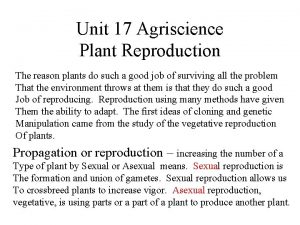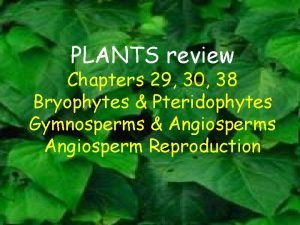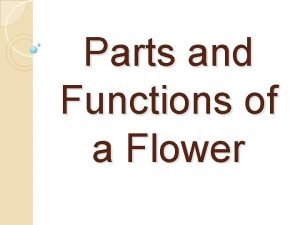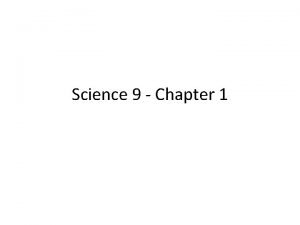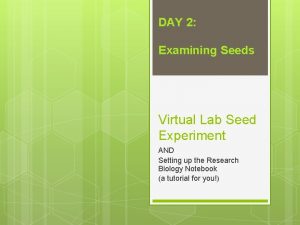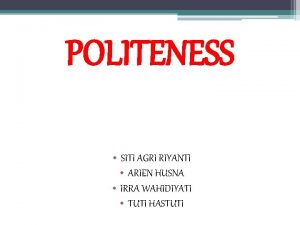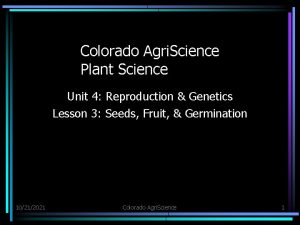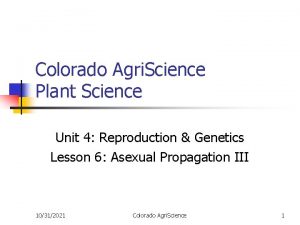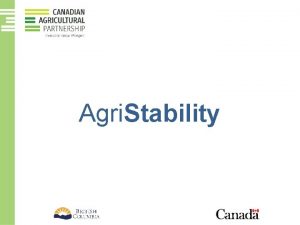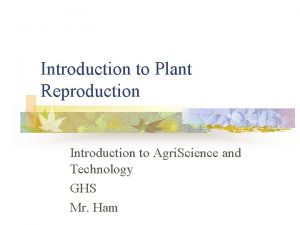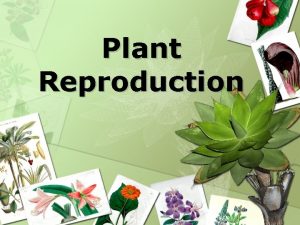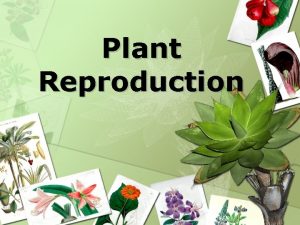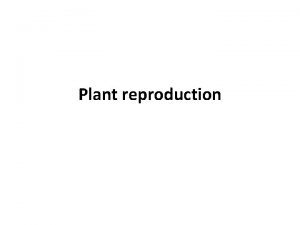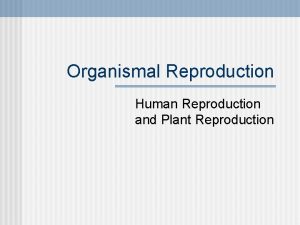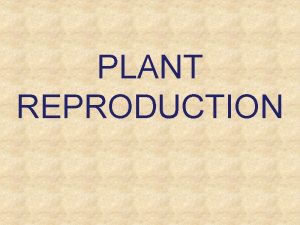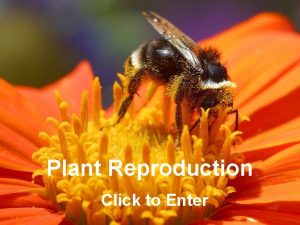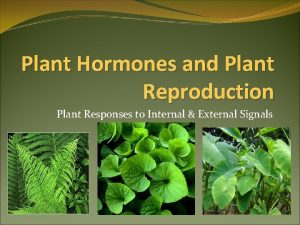Colorado Agri Science Plant Science Unit 4 Reproduction



















- Slides: 19

Colorado Agri. Science Plant Science Unit 4: Reproduction & Genetics Lesson 4: Asexual Propagation I

Asexual Propagation l Use of vegetative parts of a plant to increase its number l Advantages l Economy l Time l Plants that are identical to the parent l Methods l Cuttings, culture layering, division, grafting, & tissue

Stem Cuttings l Tools l Sharp knife, single edge razor, & disinfectant l Remove all flowers & buds l Plant needs to utilize energy for root development l Apply Rooting Hormone l Use proper soil medium

Vegetative Parts of a Plant

Stem Tip Cuttings l Normally include the terminal bud l Stem 2 -4” is used l Cut made just below the node l Remove lower leaves l Apply rooting hormone l Insert in media deep enough to be self supporting l 1 node must be below the surface of the media for root growth to occur

Stem Section Cuttings l Use middle portion of stem behind the tip cuttings, 2 -4” sections are needed l Remove lower leaves l Cut just above a node on each end l Handle as a tip cutting l Position the cutting with the right end up l Axial buds are always on the tops of the leaves

Cane Cuttings l For plants with cane like stems l Stems cut into sections with 1 or 2 nodes l Dust ends with fungicide l Dry cane for 1 -2 hours l Place cane horizontally with half the cane below the surface of the media l The eyes or nodes should face upward

Cane Cuttings

Heel Cuttings l l Used on woody stemmed plants Shield shaped cut made ½ way through the wood around the leaf & axial bud Apply rooting hormone Insert into media

Single-Eye Cuttings l l Used on plants with alternating leaves Cut ½ “ above & below the node Apply rooting hormone Place vertically or horizontally

Double-Eye Cutting l l l Used on plants with opposite leaves Used when stock material is limited Select single node Cut ½” above & below the node Apply rooting hormone Place vertically

Leaf Cuttings l l Made from leaf with the petiole cut to less then ½” Make a clean cut Apply rooting hormone Place vertically in rooting media

Leaf Petiole Cuttings Used on a leaf with ½” – 1 ½” long petiole l Place vertically in media l Several plants will develop from the base of the petiole l

Leaf Section Cuttings

Leaf Section Cuttings l Leaves such as begonia are cut into wedges, each containing at least 1 vein l Make the cut in a wedge shape with the bottom being the point l Done so you can tell the top from the bottom l Sections are then placed in media l New plants will form where the vein is in contact with the media

Split-Vein Cuttings l Used with large leaf plants such as begonias l Remove leaf from stock plant l Slit veins on the bottom surface of the leaf l Place the leaf on rooting media with the slits down l A new plant will form at each of the slits

Split-Vein Cuttings

Root Cuttings l Use plants that are 2 -3 years old l Make cuttings when plant is dormant l They will have larger supplies of carbohydrates l Top cut is straight & bottom cut is slanted l Plants l Use section 4 -6 inches long l Plants l Use with large roots with small roots section 1 -2 inches long

Root Cuttings l Store cutting 2 -3 weeks in moist peat moss or sand at a temperature of 40 degrees l Large roots l Plant vertically with the slant cut down l Top should be flush with surface of media l Small roots l Place cutting horizontally ½” below media surface
 Unit 17 plant reproduction
Unit 17 plant reproduction The disadvantages of sexual reproduction
The disadvantages of sexual reproduction Sexual reproduction and asexual reproduction
Sexual reproduction and asexual reproduction Asexual reproduction vs sexual reproduction venn diagram
Asexual reproduction vs sexual reproduction venn diagram Plant reproduction
Plant reproduction Style function in a flower
Style function in a flower Non vascular plant reproduction
Non vascular plant reproduction Plants reproduce asexually
Plants reproduce asexually Plant and animal reproduction venn diagram
Plant and animal reproduction venn diagram Seedless pants
Seedless pants Plant reproduction virtual lab
Plant reproduction virtual lab Agribee fund application form
Agribee fund application form Tact maxim examples
Tact maxim examples Lfp agri
Lfp agri Intertek agri
Intertek agri E learning portal on agricultural education
E learning portal on agricultural education Vital agri nutrients
Vital agri nutrients Agri entrepreneurship
Agri entrepreneurship Burford ağrı termometresi
Burford ağrı termometresi Giromax silicone product range
Giromax silicone product range
